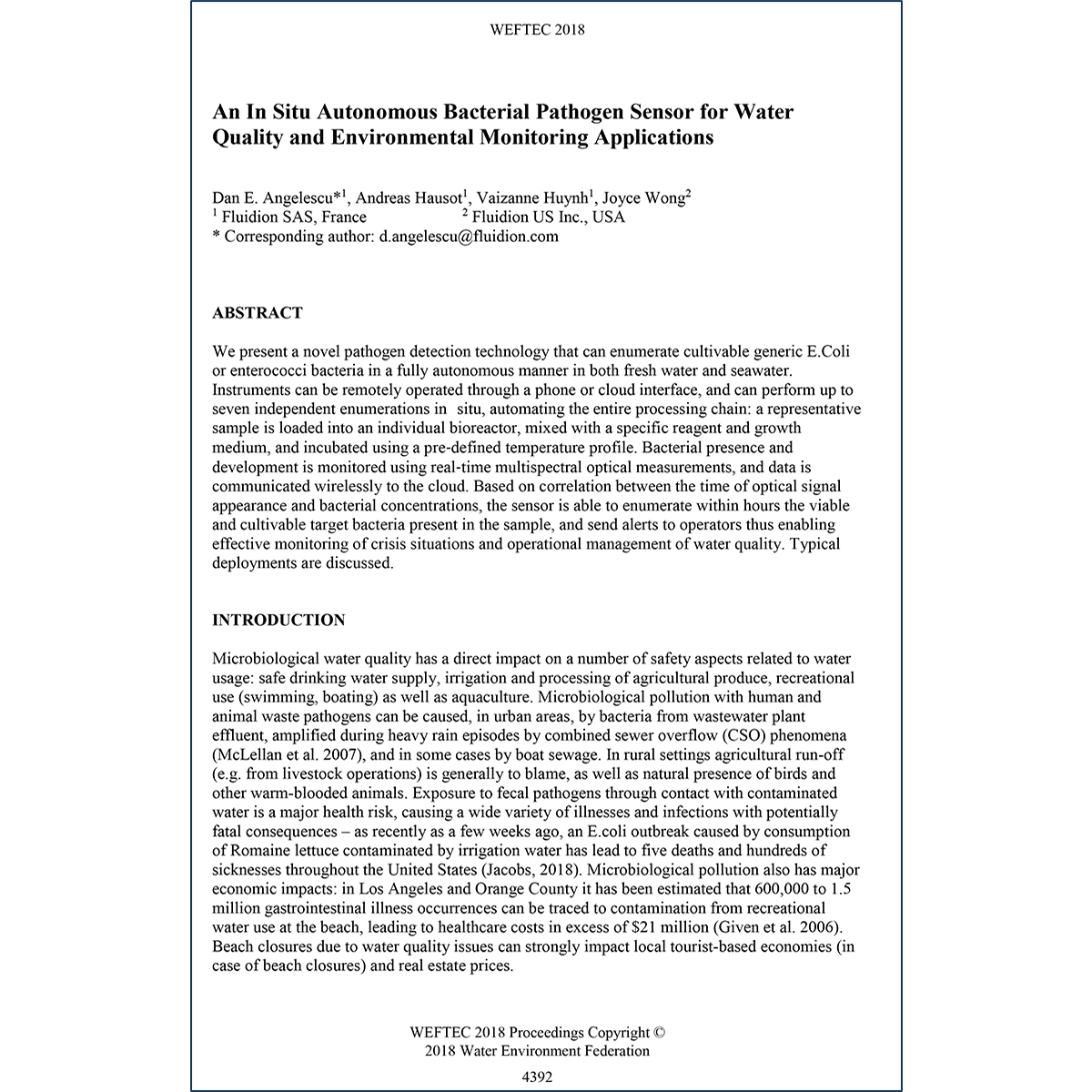
An In Situ Autonomous Bacterial Pathogen Sensor for Water Quality and Environmental Monitoring Applications
Weftec Conference Proceeding "An In Situ Autonomous Bacterial Pathogen Sensor for Water Quality and Environmental Monitoring Applications", 4392-4402 (2018)

WEFTEC CONFERENCE PROCEEDING "AN IN SITU AUTONOMOUS BACTERIAL PATHOGEN SENSOR FOR WATER QUALITY AND ENVIRONMENTAL MONITORING APPLICATIONS" (2018)
"An In Situ Autonomous Bacterial Pathogen Sensor for Water Quality and Environmental Monitoring Applications" was just release in the proceedings of the Weftec conference in New Orleans, the reference conference related to water and environmental applications in the US.
Novel technique for field quantification of E. coli and enterococci bacteria within autonomous remotely-controlled ALERT instruments
Key points:
- The methodology presented is based on a combination of fluorescent wastewater tracking, rapid microbiological measurements with ALERT technology, and automated sampling with Fluidion's aquatic drone to provide a rapid, accurate and affordable in-situ microbiological assessment of pollution sources on river ecosystems.
- Phase 1 of the study showed that there is considerable variability in E.coli concentrations in graywater discharged from houseboats. These can vary by a factor of 10⁵. Wastewater shows high concentrations with low variability (within a factor of 10).
- Phase 2 of the study demonstrated that the methodology employed allows for the rapid identification and accurate measurement of the impact of a discrete pollution event at multiple points in the river.
- In Phase 3, a total of 182 E.coli measurements were taken over the course of one month, with an average of 6 daily measurements. The data collected showed the positive impact of rainfall events on the increase in E.coli concentrations, and also that the concentrations measured upstream and downstream followed the same trends without significant deviation.
